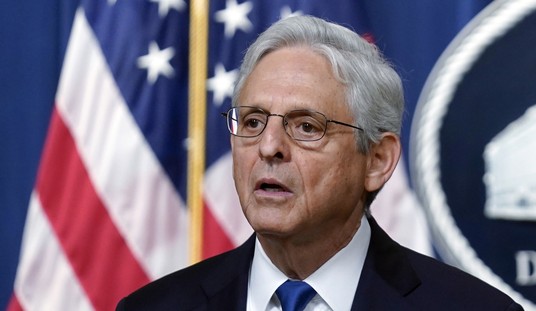A European colleague of mine lives and works in India. Recently, he came to visit. His story was unbelievable. For the last few years, every day, day after day, he, his wife, and his wife’s family have been harassed and attacked by Muslim marauders. Both his property and his medical clinic have been attacked; his Hindu wife and relatives have had their cows stolen and slaughtered, their outbuildings destroyed, their farm property taken over. The police would not help. He had to hire private security to guard his free clinic. Finally, Muslims attacked the clinic when it was filled with patients (including, of course, Muslim patients). At the last moment, before the clinic was entirely overrun, the police reluctantly came to his aid. He had to pay many bribes, pull many strings—and still, the matter is far from over.
He did not want me to write about this. “It is simply too dangerous for a Hindu to describe, accurately, what Muslims are doing to us in our own country.” He assured me that neither the government nor the media could be counted on to “do the right thing here. The media will not say that Muslims are criminally aggressive. They are too afraid to say so. They know there will be rioting. It’s already happened.”
Sound familiar?
And then, Mr. Tapan Ghosh found me. Ghosh is an incredibly brave and determined Hindu human rights activist who is taking on these Muslim immigrants, criminals, rioters, kidnappers, rapists, and traffickers of Hindu girls and women.

Tapan Ghosh
In 2008, Tapan Ghosh founded Hindu Samhati (Hindu Solidarity Movement), dedicated to strengthening Hindu identity and serving persecuted Hindu communities in Bangladesh and West Bengal, India. A Physics graduate of City College in Calcutta, he first got involved with the Hindu Revivalist Movement in India in 1966 and led a mass civil disobedience campaign against the policies of Prime Minister Indira Gandhi in 1975-77. His work grows out of a long history of persecution, including genocidal persecution, of Hindus by Muslims in the region, beginning with the partition of India into Pakistan and India in the 1940s and furthermore into Pakistan and Bangladesh in 1971. I had the privilege of interviewing him when he was in New York during a recent tour.
Chesler: How long has the Muslim violence against Hindus been going on? I know it has existed for 800 years or more. I am asking about the more recent series of events in West Bengal.
Ghosh: Though Hindus in Bengal faced massive attacks and massacres during the Partition of 1947 (when India was divided into India and Pakistan and 3/4th of Bengal went to Pakistan), the violence never ceased. In West Bengal, violence against Hindus took place again in the 1950s and from 1964-65; violence continued until 1971, when it eased off for some time. That was during the time when across the border, nearly 3 million Hindus in East Pakistan (now Bangladesh) were killed by the Pakistani Army, as part of their genocide to stop the creation of Bangladesh.
In recent times, the violence has been increasing (both in its spread and intensity) every day since the early eighties.
Chesler: What kind of violence did Muslims commit against Hindus in West Bengal and East Pakistan? Please be more specific.
Ghosh: Anti-Hindu violence started on the morning of August 16, 1946, when Muslim League volunteers forced Hindu shopkeepers in North Calcutta (in present day West Bengal) to close their shops and Hindus retaliated by obstructing the passage of League’s processions. With the tacit support of the police, the Muslim mobs went on a rampage, looting Hindu-owned shops, attacking Hindus with clubs and knives, and raping Hindu women. After a week of violence, an official estimate put the casualties at 4,000 dead and 100,000 injured. Other sources put the death toll at 6,000. Most of the victims were Hindus. The riots in Calcutta spread to other regions, reaching Noakhali, a remote district in present day Bangladesh, where a massive pogrom was organized against the Hindu minority. The death toll is estimated to be in the thousands, with 51,000 to 75,000 Hindus cleansed from this region.
General Yahya Khan, the military dictator of Pakistan, while speaking to his top military brass once said, “Kill three million of them and the rest will eat out of our hands.” The liberation movement for Bangladesh was characterized by an escalation of atrocities against the Hindus and pro-liberation Muslims. Hindus were specifically singled out because of their perceived proclivity to the Bengali language. Bengali, which has strong roots in the Sanskrit language and Hindu culture, was considered as a hindrance to the Islamisation of East Pakistan. In March 1971, the Government of Pakistan and its supporters in Bangladesh, the Jama’at- e-Islami (The Party of Islam) launched a violent operation, codenamed “Operation Searchlight,” to crush all pro-liberation activities. A large section of the Hindu intellectual community of Bangladesh was murdered, mostly by the Al-Shams and Al-Badr militia, (both were military wings of the Jama’at-e-Islami). Bangladesh government figures (officially accepted by the US State Department, which at that time of the Cold War, was openly supporting Pakistan) put the death toll at 300,000 even though nearly 3 million of them were never accounted for and are presumed dead. According to declassified documents from the George Washington University’s National Security Archives, consisting of communications between US officials working in embassies and USIS centers in Dhaka and in India, and officials in Washington, DC, the terms ‘selective genocide’ and ‘genocide’ were used to describe events.
The primary reason why Hindus have been forced to leave East Pakistan (and later Bangladesh) is a draconian law known as the Vested Property Act. According to this law, the government has the power to seize ownership of properties from individuals it deems enemies the state. It was formerly known as the Enemy Property Act (when Bangladesh was part of Pakistan) and is still referred to as such in common parlance. Abul Barkat, a professor of economics at Dhaka University who has conducted seminal research on this act, says that some 1.2 million or 44 per cent of the 2.7 million Hindu households in the country were affected by the Enemy Property Act and its post-independence version, the Vested Property Act, passed in 1974. Successive governments of Bangladesh have promised to repeal the act, but to date, some 35 years after independence, none have done so. According to one estimate, “Nearly two hundred thousand Hindu families have lost 2.2 million acres of land, including their houses, since 2001 alone. At the current market price, the value of the 2.2 million acres of land that the Hindu families were displaced from is about 3.6 billion dollars, which is more than half of the country’s gross domestic product.
Chesler: Please summarize the threats and crimes that have been perpetrated.
Ghosh: The atrocities that Hindus are facing in villages bordering Bangladesh are multifarious. The case of massive illegal infiltration is well known today. What the people of India and the United States don’t know is their activities. This includes crimes which target Hindu women; from relatively small cases of street harassment, to sexual assault, rape, kidnapping and forced conversion to Islam. Incidences of illegal migrants encroaching upon Hindu lands as well as organized land grabbing by Islamic criminal networks are also very common. There is also a sharp increase in the cases of rioting during Hindu festivals, destruction of Temples, desecration of Deities, and large-scale, provocative cow slaughter during Hindu festivals, even in Hindu-majority localities. Construction of large, illegal mosques, often upon encroached land, is happening in all border areas and has changed the landscape of rural Bengal. The establishment of massive Saudi- funded Madrasas across rural Bengal is only contributing to the growing religious extremism among Muslims, implementation of Sharia laws by Chalasi (Islamic) courts is quite prevalent in villages in the Malda, Murshidabad and North Dinajpur districts.
Finally, the Indo-Bangla border acts as a major conduit for smuggling by the terrorist networks and has grave consequences for national security. As a result of the growing Islamization of rural Bengal, Hindus are leaving the border area villages. This change in demography is well established in Assam, and I fear that the upcoming census will paint a grimmer scenario in W. Bengal too. Calls for a greater Muslim Bangla are not unheard of in Muslim-majority districts and my greatest fear is the day when Muslim zealots will give a call for Nara-e-takbir (cries of “Allahu Akbar”) and tell Hindus to either convert or leave Bengal. Where will we go then?
Chesler: Why have the Hindu police and Indian government failed to do anything to stop these crimes against their own citizens?
Ghosh: While India is constitutionally secular, it is also an electoral democracy which means that politicians care about winning elections and cannot ignore the 31% of the Bengali Muslim population that is believed to vote en-masse. The government, both at the State and Central level understand the problem, but do not want to show the political courage that is needed to talk about these issues and address them. Instead they just ignore them.
The Police response is also mixed. Though sometimes they take positive measures to stop these crimes, most often there is severe corruption, and a fear of tackling the Islamic mafia. The fact that governmental higher-ups will not be supportive of a pro-active response also demoralizes police officials at the grassroots level.
But it is not that the politicians and the government agencies are asleep, it is the middle class Bengalis that are in deep slumber. The entire Hindu Bengali intelligentsia and culturally enriched Bengali society could not provide protection to one Muslim lady, Ms. Taslima Nasreen, a poet and an intellectual who dared to raise her voice against Islamic fundamentalism in Bangladesh and had to escape to West Bengal. But the West Bengal government was so afraid, that it refused to give protection to her.
Coming soon in Part II: The role of the Media.









Join the conversation as a VIP Member